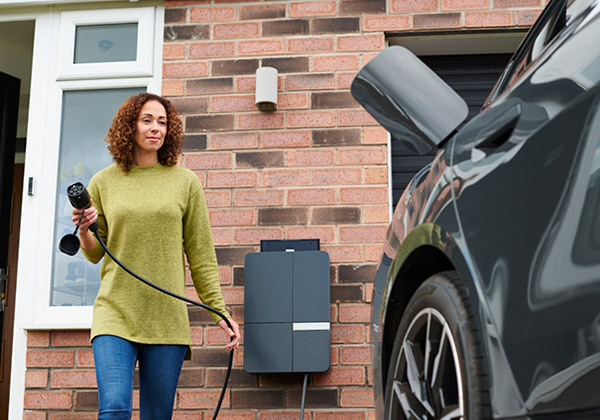Australian Solar Standard (AS/NZS 5033) revised to support growing solar industry
Statements
- In two decades, almost four million solar PV panel systems have been installed across Australia, which has seen a dramatic reduction in overall costs.
- Standards Australia has published a revision to AS/NZS 5033:2021, Installation and safety requirements for photovoltaic (PV) arrays.
- The revision aims to support users in meeting compliance requirements and promote consumer safety.
In the past twenty years, over 3.9 million solar photovoltaics (PV) panel systems have been installed across the country[1]. These solar systems generate electricity by capturing energy from sunlight via three essential components: solar photovoltaics, the inverter and the direct current (DC) isolator.
According to Solar Choice solar energy gained popularity in 2008 and 2009 following Government tariffs that offered up to 60 c/kWh for solar energy exported into the grid[2]. In the years prior, prices were as high as $15 to $20 per watt marking a significant saving and incentive to invest in solar energy. Since then, prices have dropped to an average of over just $1 per watt.
With lower associated costs, more households across Australia are focusing on renewable energy, and the highest levels of safety must be considered, from manufacturing to installation and use. It’s important that standards are in place to help support efficient installation and guide safety requirements, to support consumer confidence.
To support the growing solar panel industry, Standards Australia Technical Committee EL-042, Renewable Energy Power Supply Systems and Equipment, has recently published revised standard AS/NZS 5033:2021, Installation and safety requirements for photovoltaic (PV) arrays to ensure safeguards are in place.
“With millions of solar PV panel systems being installed across Australia, clear and relevant standards are paramount in supporting safe practice for industry professionals, homeowners and businesses,” said Roland Terry-Lloyd, head of Standards Development at Standards Australia.
Solar installation and compliance
Overall, the revision aims to provide clear and relevant guidance to support safe systems and safe practices for industry professionals and consumers. The standard has been restructured to promote better readability, supporting users in meeting compliance requirements. AS/NZS 5033 is referenced in AS/NZS 3000, commonly known as the Wiring Rules, which is called upon in legislation. Compliance with the requirements of both standards is essential.
If an Australian Standard is referenced in legislation, the relevant authority specifies the date the standard comes into effect. This date and ‘transitional period’ will be made clear in the preface of the standard.
AS/NZS 5033:2014 will remain current for six months after this time it will be superseded by AS/NZS 5033:2021. Regulatory authorities that reference this standard may apply these requirements at a different time. Users of this standard should consult with these authorities to confirm their requirements. A contact directory of some regulators is available here.
The revision includes several other significant updates. The updating of requirements for micro inverter installations and DC conditioning units will enable greater use of technology across larger panels, supporting better safety outcomes.
“At the time the 2014 standard was written, solar panels were at most 250W per panel, but technology is quickly changing, and it’s not unusual for panels to be greater than 400W,” said EL-042 Co-Chair Sandy Atkins.
“Therefore, AS/NZS 5033:2014 was limiting for installation professionals,” Mr Atkins finished.
Committee El-042 assessed different requirements around the world against Australian conditions, identified achievable safety outcomes, and determined a number of different solutions that industry can choose to best suit their installations.
“If you still want to use DC isolators then you can, but if you don’t, the standard allows for other solutions such as disconnection points,” said Mr Atkins.
Australia previously had a limitation of 600V for panels for houses but recently aligned with international requirements of 1000V. Additionally, AS/NZS 5033:2021 also aligns with international standard IEC 62548:2016, Photovoltaic (PV) arrays — Design requirements.
“Solar is booming worldwide, so it’s important we align with international standards so that the Australian market can use international products and technologies as well,” said Mr Atkins.
The recently published standard is AS/NZS 5033:2021, Installation and safety requirements for photovoltaic (PV) arrays.
[1] Clean Energy Regulator, Postcode data for small-scale installations | Accessed: 29 September 2021
[2] Solar Choice, Solar panels cost data: Solar Choice Price Index | Accessed: 29 September 2021

- In two decades, almost four million solar PV panel systems have been installed across Australia, which has seen a dramatic reduction in overall costs.
- Standards Australia has published a revision to AS/NZS 5033:2021, Installation and safety requirements for photovoltaic (PV) arrays.
- The revision aims to support users in meeting compliance requirements and promote consumer safety.
In the past twenty years, over 3.9 million solar photovoltaics (PV) panel systems have been installed across the country[1]. These solar systems generate electricity by capturing energy from sunlight via three essential components: solar photovoltaics, the inverter and the direct current (DC) isolator.
According to Solar Choice solar energy gained popularity in 2008 and 2009 following Government tariffs that offered up to 60 c/kWh for solar energy exported into the grid[2]. In the years prior, prices were as high as $15 to $20 per watt marking a significant saving and incentive to invest in solar energy. Since then, prices have dropped to an average of over just $1 per watt.
With lower associated costs, more households across Australia are focusing on renewable energy, and the highest levels of safety must be considered, from manufacturing to installation and use. It’s important that standards are in place to help support efficient installation and guide safety requirements, to support consumer confidence.
To support the growing solar panel industry, Standards Australia Technical Committee EL-042, Renewable Energy Power Supply Systems and Equipment, has recently published revised standard AS/NZS 5033:2021, Installation and safety requirements for photovoltaic (PV) arrays to ensure safeguards are in place.
“With millions of solar PV panel systems being installed across Australia, clear and relevant standards are paramount in supporting safe practice for industry professionals, homeowners and businesses,” said Roland Terry-Lloyd, head of Standards Development at Standards Australia.
Solar installation and compliance
Overall, the revision aims to provide clear and relevant guidance to support safe systems and safe practices for industry professionals and consumers. The standard has been restructured to promote better readability, supporting users in meeting compliance requirements. AS/NZS 5033 is referenced in AS/NZS 3000, commonly known as the Wiring Rules, which is called upon in legislation. Compliance with the requirements of both standards is essential.
If an Australian Standard is referenced in legislation, the relevant authority specifies the date the standard comes into effect. This date and ‘transitional period’ will be made clear in the preface of the standard.
AS/NZS 5033:2014 will remain current for six months after this time it will be superseded by AS/NZS 5033:2021. Regulatory authorities that reference this standard may apply these requirements at a different time. Users of this standard should consult with these authorities to confirm their requirements. A contact directory of some regulators is available here.
The revision includes several other significant updates. The updating of requirements for micro inverter installations and DC conditioning units will enable greater use of technology across larger panels, supporting better safety outcomes.
“At the time the 2014 standard was written, solar panels were at most 250W per panel, but technology is quickly changing, and it’s not unusual for panels to be greater than 400W,” said EL-042 Co-Chair Sandy Atkins.
“Therefore, AS/NZS 5033:2014 was limiting for installation professionals,” Mr Atkins finished.
Committee El-042 assessed different requirements around the world against Australian conditions, identified achievable safety outcomes, and determined a number of different solutions that industry can choose to best suit their installations.
“If you still want to use DC isolators then you can, but if you don’t, the standard allows for other solutions such as disconnection points,” said Mr Atkins.
Australia previously had a limitation of 600V for panels for houses but recently aligned with international requirements of 1000V. Additionally, AS/NZS 5033:2021 also aligns with international standard IEC 62548:2016, Photovoltaic (PV) arrays — Design requirements.
“Solar is booming worldwide, so it’s important we align with international standards so that the Australian market can use international products and technologies as well,” said Mr Atkins.
The recently published standard is AS/NZS 5033:2021, Installation and safety requirements for photovoltaic (PV) arrays.
[1] Clean Energy Regulator, Postcode data for small-scale installations | Accessed: 29 September 2021
[2] Solar Choice, Solar panels cost data: Solar Choice Price Index | Accessed: 29 September 2021

Email:

Email:


